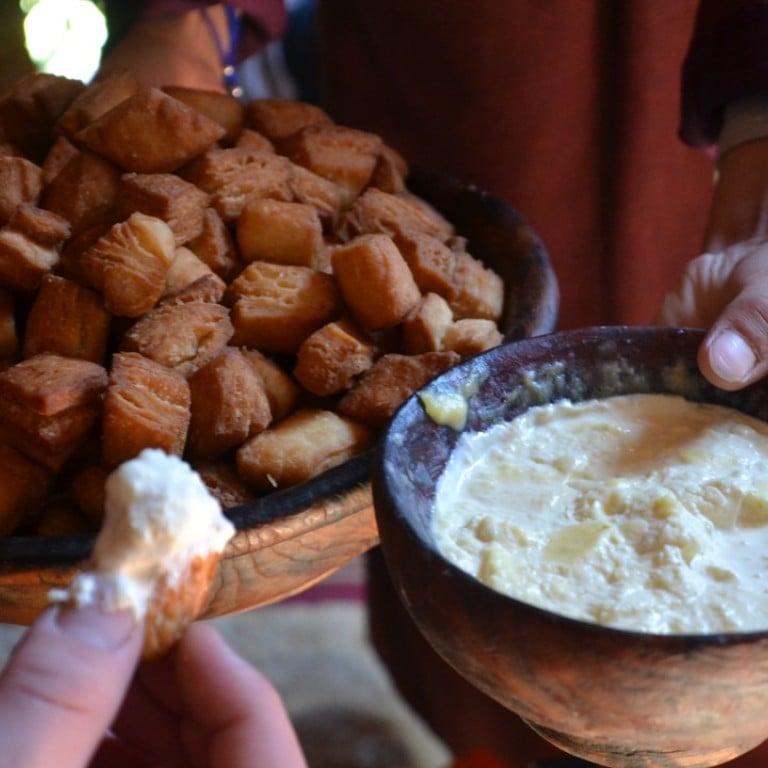
Mongolia for foodies: gamy lamb, air-dried yak and camel, curdled milk, and dumplings galore
- Mongolia’s weather defines its food like few other destinations, with meals heavy in meat and dairy products and full of unique flavours
- Visitors can arrange to stay in tents next to families and dine with them
Mongolia is probably not at the top of the average foodie’s list when it comes to culinary destinations. The country is well known for Genghis Khan and the yaks roaming its vast grasslands, but food? It is just not why people visit there.
As is often the case, though, it is food that provides a window on the country’s unique culture and people that make Mongolia such a beguiling place to visit.
Mongolia: 40 years of Asia travel and nothing had prepared me for it
The flight time from Hong Kong is four-and-a-half hours, a little more than to Singapore. As the plane descends to the capital, Ulan Bator, you see nothing but rolling green landscapes dotted with groups of traditional nomadic homes called gers. In Hong Kong, an average of about 6,700 people inhabit every square kilometre; in Mongolia, the world’s eighteenth largest country, it is just two.
Ulan Bator means “red hero” and is home to 1.5 million people, half the country’s entire population. A key transit point for travellers, it is also a city of extremes: it is the world’s coldest capital, with temperatures regularly going as low as minus 35 degrees Celsius (minus 31 degrees Fahrenheit) in winter, but one that also boasts very warm summers and 200 days a year of blue skies.
There are a few five-star hotels, a smattering of fast food joints, as well as by far the country’s widest collection of restaurants. Most international visitors only spend as long in the capital as they need to, however, preferring to explore the breathtaking landscapes that begin on the city’s doorstep.
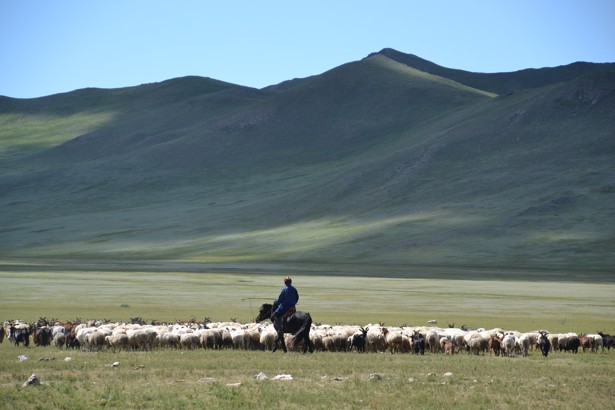

Mongolia’s weather defines its food like few other destinations. Barely 100 frost-free days a year means that the Mongolian diet consists largely of meat, dairy and animal fats, providing critical sustenance and energy for working and living at the mercy of the elements. Traditional nomadic lifestyles mean that families live with their herds of animals, depending on them for warmth, income and food.
Given the vast distances, lack of road signs and linguistic challenges involved in travelling the country, pretty much everyone who visits Mongolia outside Ulan Bator does so as part of a tour, either joining a larger group or as a bespoke trip. Hong Kong-based Lightfoot Travel designs tailor-made trips that let you choose destinations, cultural highlights and experiences while it handles the logistics, including meals.
A stay at a traditional tourist nomadic camp located just 60km from the capital provided the perfect introduction to some of Mongolia’s most popular dishes. Dinner is served in a large communal ger and starts with Russian salad. It is no surprise that both Russian and Chinese influences abound, given Mongolia’s location wedged between the two giants.

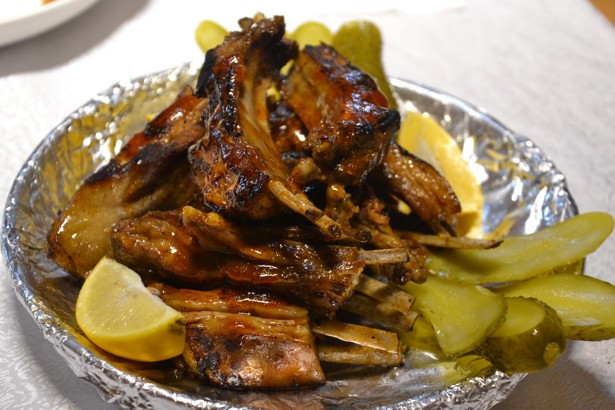
Outside the short summer months, fresh fruit and vegetables are scarce and expensive, so tinned or frozen versions are more common. When I asked about being vegetarian in Mongolia, one guide laughed and said, “As a Mongolian we could eat all day long, but if we don’t have any meat, we’d say we haven’t eaten at all.”
That was evidenced by the veritable meat wave of dishes that followed. First came excellent lamb ribs which had been covered in a sticky teriyaki-style sauce. Lamb and mutton are absolutely everywhere in Mongolian cuisine, so if you don’t like them, you could be in for some pretty empty plates.
There is also an entirely different taste to the lamb, a huge gamy whack of flavour that reflects the animals’ lives spent grazing the endless grasslands and wildflowers.
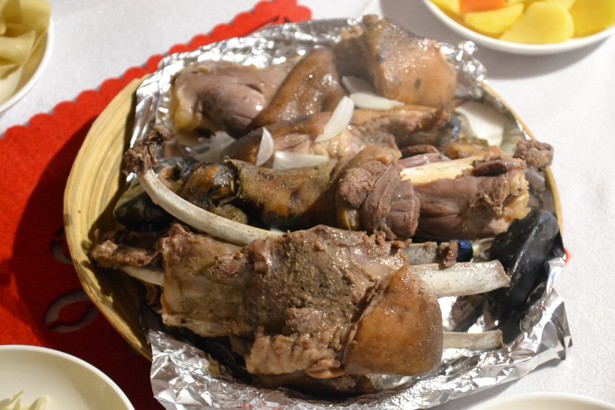
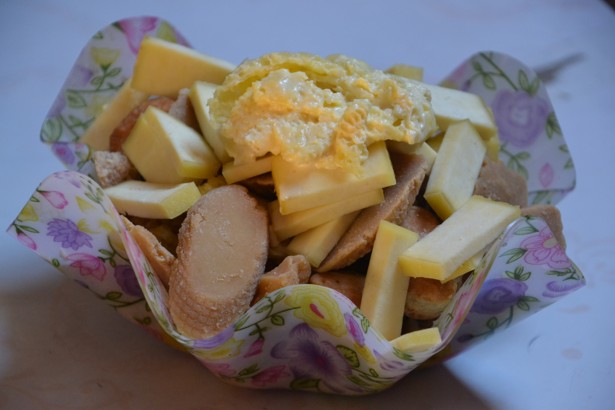
It is worth noting that Mongolian meals are always substantial. Back in the 14th century, when Genghis Khan’s Mongol empire stretched from the Pacific Ocean to the Caspian Sea, soldiers would prepare and eat khorkhog. The dish comprises huge cuts of meat and a few token potatoes steamed with hot stones either in a pot, normally a metal milk container, or historically in a marmot or goat skin, called a boodog.
Mongol soldiers would use their shields as plates and their swords as knives, but today the meat is generally eaten with fingers. As Mongolian cooking doesn’t use much in the way of spices, other than salt and pepper, the bottles of chilli sauce on the table are a welcome addition. The hot stones are also offered to guests – once they have cooled down slightly – to rub in their hands. When it is minus 40 degrees Celsius outside, the benefits need no explanation.
Incidentally, if you have ever come across a “Mongolian barbecue” restaurant in the US or elsewhere, they are about as representative of real Mongolian food as General Tso’s chicken is of real Chinese cuisine.

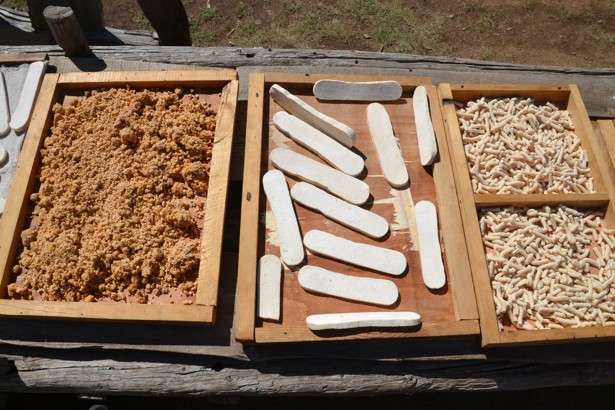
One of the greatest pleasures of visiting Mongolia comes in crossing the breathtaking, unending landscapes with barely another soul in sight. Eagles and vultures soar above you, while wild horses graze contentedly on wild lavender and herbal thyme which carpet the ground and perfume the air. After driving for hours, the only signs of life are occasional gers. Lightfoot Travel enables you to stay in luxury versions of these nomadic tents, living adjacent to a family whose life revolves around their animals.
It is a remarkable, humbling experience and reveals so much about these people and their food. The door of a ger tent always faces south, to ensure that lost travellers have a compass of sorts. When your next door neighbour can be 50km away, this is crucial. Hospitality absolutely defines Mongolian nomadic culture and protocol means you are always offered food.
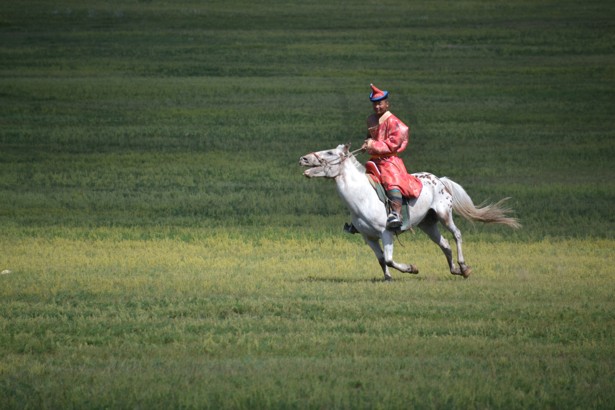
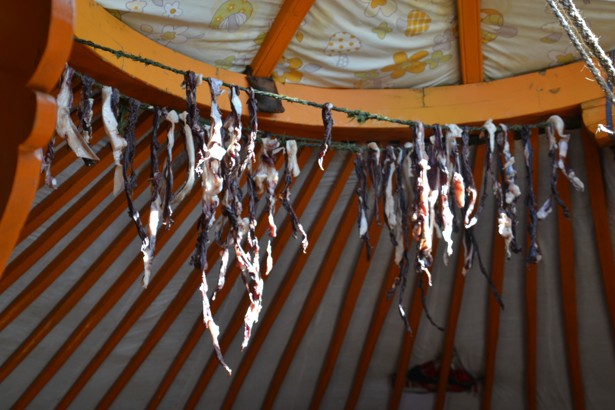
There are two support pillars in a ger that represent the husband and wife. Immediately on entering, always walking in a clockwise direction, you are offered suutei tsai, namely dried tea with milk, water and a little salt that is boiled on a central stove.
The family’s herd of cattle roam outside, just a few yards from where we sit, and you are welcome to join in as they milk the animals – by hand, naturally. Their still-warm milk creates tsagaan idee, or “white food”. Milk symbolises both purity and kindness and is of course hugely versatile, while it also helps explain why Mongolians tend to have such strong teeth.
All the white food generously offered is memorable, albeit for different reasons. Urum is sensational fresh cow’s cream, almost clotted, that can also be made from yak or, if you’re in the Gobi Desert, camel milk. It is usually eaten with boortsog – delicious nuggets of sweetened fried dough that are dipped into it. In effect, it is the ultimate fresh cream doughnut.
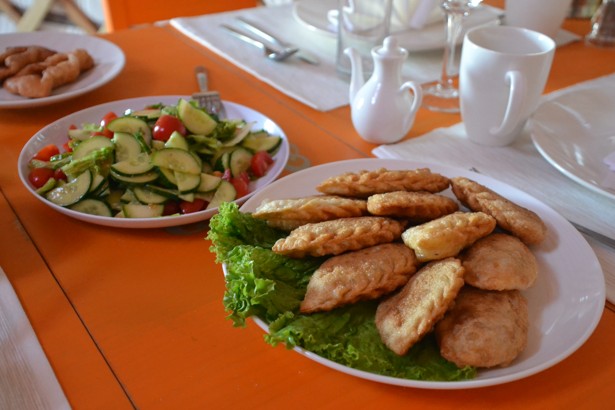

Aaruul is curdled milk that is dehydrated and then dried in the sun for days. It is definitely an acquired taste but adored by Mongolians, especially children who eat the dried blocks when teething because they last forever and never go bad. There is excellent butter, fresh yogurt and mounds of more dried cheeses in different shapes, textures and colours.
Air-dried strips of beef, goat, yak or camel hang from the roof of the ger, the perfect addition to noodle soup. You can count yourself lucky it is air-dried as historically warriors would put raw meat under their wooden saddle and 1,000km later you would have something approaching jerky.
Mongolia’s nomads: masters of their destiny in a changing world
Finally, Mongolia’s vast array of dumplings are not to be missed. Huushuur are deep fried lamb or beef pastries, like an empanada. Gently spiced, these crisp delights occasionally feature wild garlic, leeks or nettles for extra zing. Buuz are steamed Mongolian dumplings that are eaten by first biting or piercing the skin before slurping, not unlike Hong Kong’s xiaolongbao. For the ultimate in authentic local eats, the following day the now-cold pastries can be ripped up and covered in the aforementioned hot milk tea – a truly unique breakfast that you are unlikely to repeat anywhere else except beautiful and wild Mongolia.
Getting there
Four times a week MIAT Mongolian Airlines flies direct from Hong Kong to Ulan Bator in a code-share with Cathay Pacific.
Lightfoot Travel offers tailor-made trips to Mongolia.

